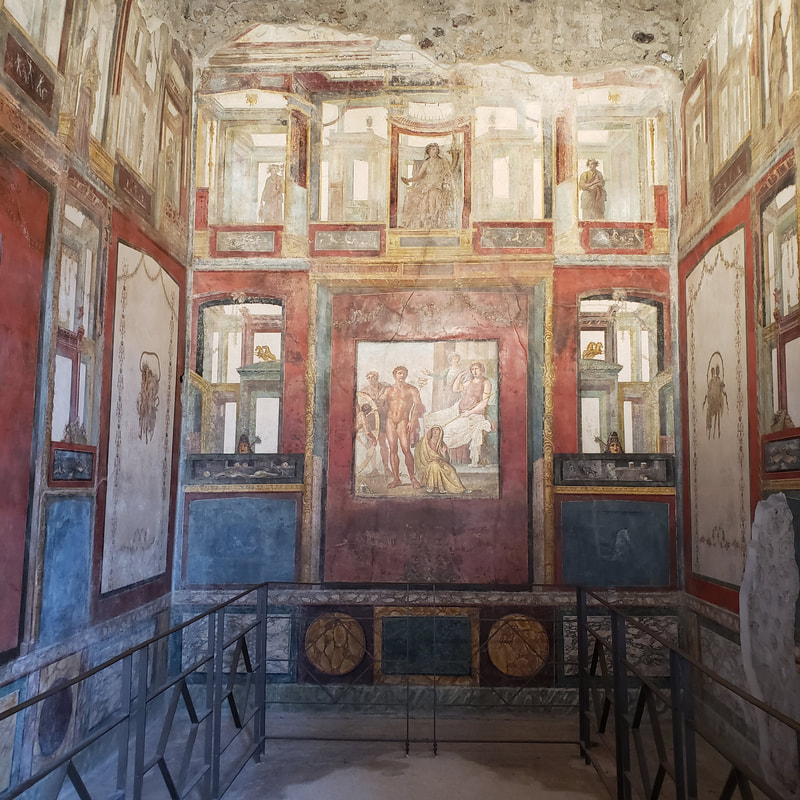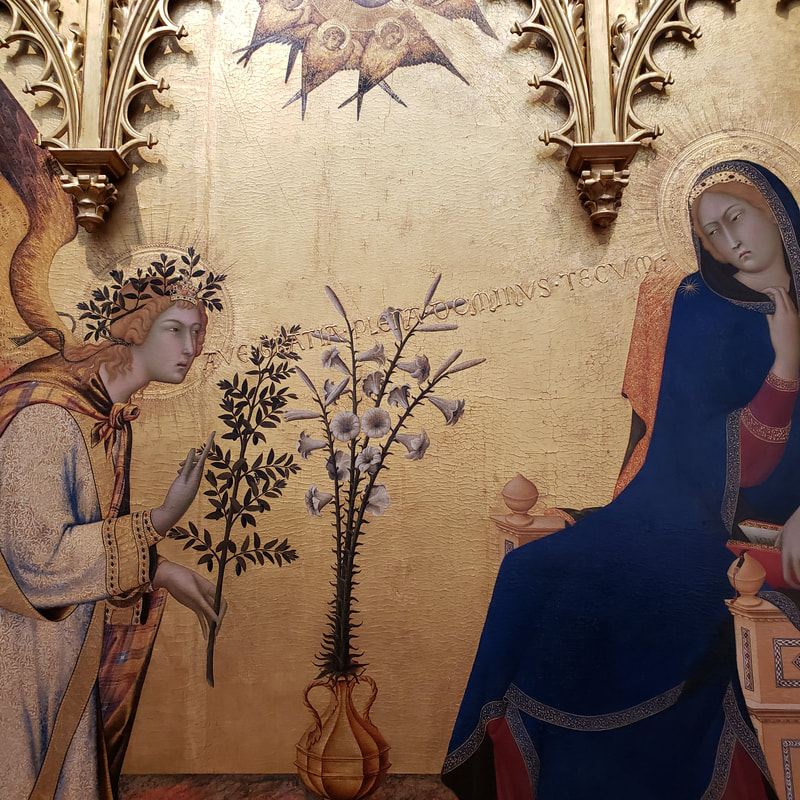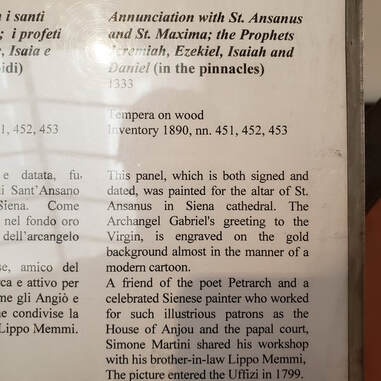|
I visited several museums in Italy - - my partner and I drove through Milan, Pisa, Rome, Napoli, Herculaneum, Pompeii, Orvieto, Firenze, and Venezia - - and observed (overwhelmingly) a lot of historical art and archeological sites. Human story-telling techniques have not changed much over time. However, it is so cool to witness the progenitors of graphic literature. So, I temporarily (easily) categorized two types of Italian graphic story telling techniques:
1. Art without wordsEven though there are no words, audiences will understand a story. I would like to show you an example from a mural in Pompeii. Some murals survived in Pompeii and Herculaneum. The two cites were buried under volcanic ashes and pumice stores by Mount Vesuvius (6th–7th century BCE). Herculaneum was recently found, and archeologists have been digging up Pompeii for over three hundred years. In Pompeii, the House of Vettii, Domus Vettiorum in Latin, was recently unveiled after 20 years of restoration. I took pictures of some murals about angels' stories. In this, angels perform human tasks - - such as make bronze trinkets, weigh their products, and ride carriages. On each mural, there are main and sub stories. For example, epic Greek stories were told on the main walls, and everyday life sketches were designed on side walls or small spaces. I loved seeing the ancient comics. Especially on the above murals, where the angels comedically mimic human life. One angel falls from its ride. And all their faces are so unique and cartoonish. The mural is just like the Far Side or Snoopy. I saw the story-telling style, "Art without words", a lot in early Italian works. This is another great example of art without words. This is the bottom of Pacino di Bonaguida's panel painting at the Academia Gallery in Firenze. It is the most popular story of Adam and Eve, the creation myth of the Abrahamic religions. By the 14th century, the story was ubiquitous. Therefore, there is little need for words to explain what is going on. 2. Art with one short sentence or a couple of wordsFrom the 14th century art, I started noticing words on paintings. When I saw this art, I quietly screamed, "This is graphic literature!" And I was so happy to read the descriptions of the art. The curator wrote, "The Archangel Gabriel's greeting to the Virgin, is engraved on the gold background almost in the manner of a modern cartoon." Gabriel is on the left and Maria is on the right. Gabriel said, "ave gratia plena dominvs tecvm (Hail, full of grace, the Lord is with thee)". Between them, there is a lily stem - - symbol of purity (almost cliché for all classical Italian art) - - and look at Maria's face! She is like, "What~ No, thank you."
This is definitely line-break hyper awareness! My idea of line-break hyper awareness means that one that guides the reader’s eyes and emotions through poetic lines with static materials. The golden line starts from the bottom left to top right, which is counter to common human eye reading motions, especially current western graphic narratives. In addition, why does the spoken line need to support the art? The previous Adam and Eve painting does not have any words. Everyone knows about the Virgin Mary's story, right? However, the painter decided to add the golden line with an expensive embossing technique. This is an emphasize to reinforce the viewers' dramatic impression. It is so cool to see the origin of line-break hyper awareness. Comments are closed.
|
Archives
July 2024
|
フジハブ
Welcome to FUJI HUB: Waystation to Poetry, Art, & Translation. This is not your final destination. There are many links to other websites here, so please explore them!
Welcome to FUJI HUB: Waystation to Poetry, Art, & Translation. This is not your final destination. There are many links to other websites here, so please explore them!
What are you looking for?
FUJI HUB Directory
Popular Sites:
Gallery of Graphic Poems
Working On Gallery
(Monthly New Article by Writers & Artists)
About Naoko Fujimoto
Contact
Naoko Fujimoto Copyright © 2024
FUJI HUB Directory
Popular Sites:
Gallery of Graphic Poems
Working On Gallery
(Monthly New Article by Writers & Artists)
About Naoko Fujimoto
Contact
Naoko Fujimoto Copyright © 2024








